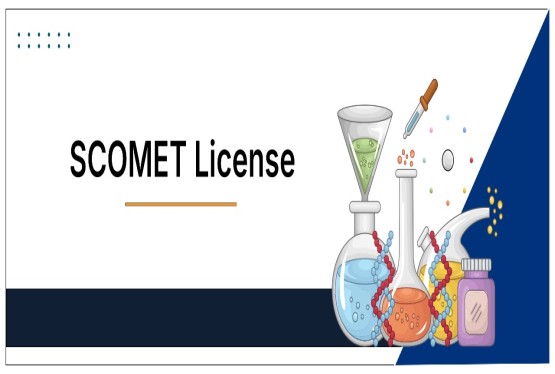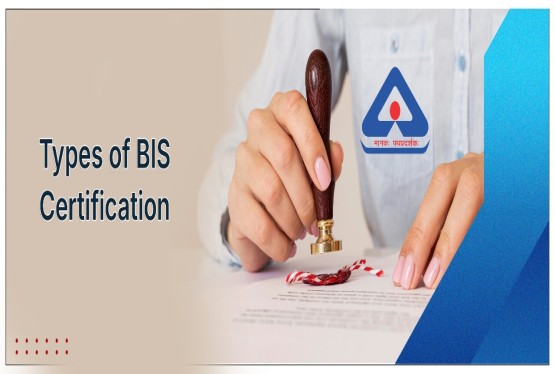The Eco Mark Scheme is a certification initiative launched by the Government of India to recognize environmentally friendly products that adhere to certain prescribed standards. Introduced in 1991, this eco-labelling scheme is implemented by the Bureau of Indian Standards (BIS) under the BIS Act, 1986, and is supervised by the Ministry of Environment, Forests, and Climate Change. The Eco Mark symbol signifies that the product has minimal adverse effects on the environment during its lifecycle, including production, use, and disposal stages.
What is the Eco Mark Scheme?
The Eco Mark Scheme is a voluntary labelling program designed to identify products that are environmentally sound throughout their entire life cycle. It applies to a broad range of consumer goods and is meant to distinguish products that adhere to environmental and quality standards defined by the BIS. The scheme encourages manufacturers to adopt sustainable practices and offers consumers a means to select products that are less damaging to the environment. Introduced in 1991, it is one of India's earliest green certification initiatives and plays an important role in promoting ecological awareness and responsibility.
Objectives of the Eco Mark Scheme
The Eco Mark Scheme has several core objectives that aim to benefit the environment, manufacturers, and consumers:
-
To Promote Environmentally Responsible Production: The scheme aims to encourage producers and importers to minimize the environmental footprint of their products. This includes the adoption of sustainable raw materials, cleaner technologies, and efficient energy use.
-
To Recognize Sustainable Business Practices: The Eco Mark serves as a badge of honor for companies committed to green practices. It is a way to reward those industries that make deliberate efforts to reduce pollution and use resources responsibly.
-
To Educate and Empower Consumers: By highlighting environmentally safe products, the Eco Mark informs consumers and guides them toward making purchases that support ecological balance. It helps them become conscious participants in environmental conservation.
-
To Foster Green Consumer Behavior: The initiative seeks to create a market shift where consumers are inclined to prefer products that bear the Eco Mark, thus encouraging industries to adopt eco-friendly processes.
-
To Support Sustainable Resource Use: Through its criteria and monitoring, the scheme supports judicious and sustainable utilization of raw materials, helping improve the overall quality of the environment.
Eco Mark Logo and Its Meaning
The logo for the Eco Mark Scheme is an earthen pot, or Matka, which is symbolic in many ways. It represents Indian heritage, sustainability, and environmental balance. The choice of this logo reflects the use of natural and renewable materials like clay, which decompose easily and do not pollute the environment. The logo also signifies the harmony between strength and fragility found in nature. When a product carries this symbol, along with the ISI mark, it assures customers that it meets both quality and environmental safety standards.
Products Covered Under the Eco Mark Scheme
The Eco Mark Scheme covers a wide variety of goods that can significantly impact the environment at different stages of their lifecycle, such as manufacturing, usage, and disposal. Here are the product categories currently under the scheme:
-
Soaps and Detergents: These products must be phosphate-free and easily biodegradable to reduce water pollution.
-
Food Items and Additives: Products in this category must avoid harmful preservatives and should ideally be produced using sustainable agricultural practices.
-
Paints and Coatings: Should have minimal volatile organic compounds (VOCs) to reduce air pollution.
-
Lubricating Oils: These should be either biodegradable or designed for recycling, with low heavy metal content.
-
Electrical and Electronic Goods: Must be energy efficient and designed to be easily disassembled for recycling.
-
Batteries: Should be made with minimal lead and other harmful substances, and must be recyclable.
-
Plastic Products: Should avoid toxic chemical additives and must be recyclable or biodegradable.
-
Packaging Materials: Must be biodegradable or made from recycled sources.
-
Cosmetics and Aerosols: Must not use ozone-depleting substances like chlorofluorocarbons (CFCs).
-
Textiles and Coir Products: Should be manufactured using eco-friendly dyes and without the use of synthetic chemicals.
-
Leather and Wood Substitutes: Must be derived from sustainable sources and processed in an environmentally friendly manner.
Benefits of Eco Mark Scheme
Obtaining the Eco Mark certification offers multiple advantages to businesses and consumers alike:
-
Consumer Trust: Products carrying the Eco Mark logo are seen as credible and trustworthy, as they comply with both BIS quality and environmental standards.
-
Market Edge: The label differentiates the product in a competitive market, attracting environmentally aware customers and giving the brand a superior image.
-
Regulatory Approval and Government Tenders: Some government contracts give preference to eco-labelled products, which can benefit certified manufacturers.
-
Operational Improvements: Achieving Eco Mark certification encourages companies to optimize energy use, reduce waste, and streamline production, leading to cost savings in the long run.
-
Environment Protection: Eco Mark products cause lesser harm to the environment and thus contribute to the larger goal of sustainable development.
-
Consumer Awareness: It helps in spreading awareness about environmental issues and promotes responsible consumption among citizens.
Functions of the Eco Mark Scheme
The Eco Mark Scheme is not only a certification initiative but also a tool for change in production and consumption behavior. Its key functions are:
-
Standard Setting: BIS collaborates with environmental and industry experts to define criteria for product certification under relevant Indian Standards.
-
Product Testing and Verification: BIS ensures that all certified products undergo stringent testing through accredited labs to validate environmental claims.
-
Monitoring and Auditing: BIS routinely audits license holders to verify ongoing compliance with the Eco Mark criteria. Non-compliance may lead to suspension or cancellation of the license.
-
Consumer Education: Through awareness campaigns and labeling practices, the Eco Mark Scheme educates consumers about green products.
-
Regulatory Enforcement: BIS can act against false claims and ensure that only eligible products display the Eco Mark logo.
Criteria for Eco Mark Certification
The criteria for Eco Mark certification are rigorous and assess multiple environmental aspects:
-
Pollution Potential: The product must demonstrate significantly lower pollution levels across its lifecycle, including production, use, and disposal, compared to conventional products in its category.
-
Materials Used: The product should consist of biodegradable, recycled, or recyclable materials that minimize waste and environmental contamination.
-
Resource Conservation: The production process should conserve energy, water, and other resources, thus reducing the strain on natural ecosystems.
-
Environmental Impact During Use: The product’s usage should result in minimal environmental damage. For example, paints with lower VOC emissions contribute to better indoor air quality.
-
End-of-Life Disposal: Products must be safe for disposal without harming soil, air, or water. Preferably, they should break down naturally or be easily recyclable.
-
Overall Sustainability: The entire lifecycle—from raw material sourcing to disposal—must reflect principles of sustainability and eco-conscious design.
Process of Eco Mark Scheme Certification
Manufacturers must undergo a thorough application and assessment process to obtain the Eco Mark license from BIS:
-
Application Filing: The manufacturer initiates the process by submitting an application to the relevant BIS regional office, providing details about the product and its manufacturing process.
-
Fee Submission: Applicants are required to pay fees for application processing, testing, annual license, and sample collection, depending on production volume.
-
On-Site Inspection: BIS officials visit the manufacturing site to inspect production processes, evaluate the use of raw materials, energy efficiency, and waste management systems.
-
Product Sample Testing: During inspection, samples are collected and sent to an NABL-accredited laboratory. These tests confirm if the product complies with both quality and environmental standards.
-
Compliance Notification: If issues arise, BIS provides a list of corrective actions required. Only after these are addressed can the process move forward.
-
Grant of License: Once the product passes all evaluations, BIS grants a one-year license to use the Eco Mark. Manufacturers can renew it annually based on continued compliance.
Documents Required for Eco Mark Certification
To apply for the Eco Mark, the manufacturer must submit several documents to BIS:
-
Product Details: Technical specifications, bill of materials, and manufacturing methods.
-
Test Reports: Laboratory reports from NABL-accredited labs validating product performance and environmental impact.
-
Business Details: Certificate of Incorporation, MOA, and AOA (for companies) or equivalent documents for proprietors.
-
Catalog and Samples: Product catalog and physical samples for reference during inspection and testing.
-
Compliance Records: Any existing environmental certifications, safety records, or quality audit reports can also support the application.
Role of the Bureau of Indian Standards (BIS)
BIS plays an important role in the Eco Mark Scheme and performs multiple responsibilities:
-
BIS oversees the functioning, implementation, and expansion of the Eco Mark Scheme in India.
-
It works with technical committees to develop product-specific environmental and quality standards.
-
BIS evaluates all applications, checks the validity of submitted documents, and verifies eligibility before granting certification.
-
Conducts physical audits and coordinates with labs for testing to ensure product compliance with standards.
-
Issues, renews, suspends, or cancels Eco Mark licenses based on adherence to compliance and performance parameters.
Challenges in Eco Mark Implementation
Despite its usefulness, the Eco Mark Scheme faces several challenges that limit its full potential:
-
Many Indian consumers are not familiar with the Eco Mark or its significance, which limits demand for certified products.
-
Since the scheme is voluntary, there is little incentive for manufacturers to seek certification unless market or policy demands arise.
-
Companies sometimes market their products as 'green' without proper certification, misleading consumers and undermining the credibility of genuine eco-labelled products.
-
Although many categories are included, various essential product types are still left out of the scheme, limiting its reach and impact.
Conclusion
The Eco Mark Scheme is an important Scheme in India’s sustainability mission. It bridges the gap between environmentally conscious production and responsible consumption. By offering a clear and verifiable standard, it encourages industries to reduce their ecological footprint and supports consumers in making informed decisions.
To make the scheme more effective, the government should consider making it more inclusive, enforcing stricter action against false claims, and launching awareness campaigns to educate consumers and businesses. With wider participation and greater public recognition, the Eco Mark can significantly contribute to India's environmental goals and build a greener future.
If you need any help in this scheme you can connect with Compliance Calendar epxerts through email at info@ccoffice.in or Call/Whatsapp at +91 9988424211.
FAQs
Q1. What is the Eco Mark Scheme?
Ans. The Eco Mark Scheme is a voluntary labelling system introduced by the Government of India in 1991. It certifies products that have minimal environmental impact throughout their lifecycle. The Bureau of Indian Standards (BIS) implements this scheme by evaluating and certifying eligible products based on predefined environmental criteria.
Q2. Who implements the Eco Mark Scheme in India?
Ans. The Eco Mark Scheme is implemented by the Bureau of Indian Standards (BIS) under the BIS Act, 1986. BIS is responsible for developing criteria, conducting inspections, evaluating products, and granting certification to manufacturers whose products meet the required environmental standards.
Q3. What is the logo of the Eco Mark Scheme and what does it represent?
Ans. The Eco Mark logo is an image of an earthen pot (Matka), which symbolizes sustainability and the use of natural, renewable resources. It represents the harmony between strength and fragility in nature, indicating that the product is eco-friendly and safe for the environment.
Q4. What types of products can get certified under the Eco Mark Scheme?
Ans. Products such as soaps, detergents, food items, paints, lubricants, electronic goods, batteries, plastics, packaging materials, cosmetics, textiles, leather, and wood substitutes are eligible for certification under the Eco Mark Scheme, provided they meet the specific environmental criteria.
Q5. Is the Eco Mark certification mandatory for products in India?
Ans. No, the Eco Mark certification is completely voluntary. It is not mandatory for any product. However, obtaining it helps manufacturers demonstrate their commitment to environmental responsibility and gives them a competitive advantage in the market.
Q6. How long is the Eco Mark license valid?
Ans. The Eco Mark license is issued for a minimum period of one year. Manufacturers must apply for renewal before the expiry, and BIS may reassess the product to ensure ongoing compliance with the certification standards.
Q7. How can a manufacturer apply for Eco Mark certification?
Ans. Manufacturers must apply to the regional office of BIS by submitting an application form along with the required fees and documents. After that, BIS inspects the manufacturing unit and sends product samples for testing. If all criteria are met, BIS issues the Eco Mark license.
Q8. What are the benefits of having an Eco Mark certified product?
Ans. Eco Mark certified products benefit from enhanced market credibility, consumer trust, access to eco-conscious customers, and potential preference in government procurement. It also helps in promoting sustainable production practices and reducing environmental pollution.












































































_crop10_thumb.jpg)







_Rules,_2025_learn_crop10_thumb.jpg)























































































_crop10_thumb.jpg)




